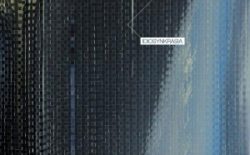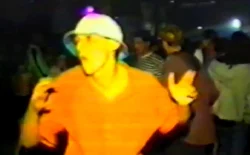Available on: Infiné LP
In a recent interview, composer Francesco Tristano identified a singular aim: “I want to bring the piano into the 21st century.” But what exactly is he getting at?
The piano has been used in electronic music recordings from the very beginning and played a leading role in house music in particular, but it’s true that the instrument’s European classical roots have only recently sprouted new offshoots. Transforming the grand piano’s association with rigid 18th and 19th century structures might sound ambitious but the notion has gained traction as modern audiences become more familiar with classical and electronic music’s shared ambient and rhythmic textures. Since 2000 labels like Nonclassical (who’ve commissioned classical music remixes by Vex’d, Starkey and Mira Calix) and artists such as Ryuichi Sakamoto and Max Richter have drawn formal composition and electronic music worlds ever closer.
30-year old Tristano discovered New York’s vital club scene while training in the early ‘00’s at Juilliard School of Music and has since collaborated with producers Fernando Corona (a.k.a. Murcof) and Moritz Von Oswald (Basic Channel) on two previous solo releases. For this project, he ventured to Detroit to record at Carl Craig’s Planet E studio; Craig executive produced the album while Tristano provides all programming, instrumentation and arrangements, on a nine-song LP that richly combines both precise and improvised keys with machine music inspired by Detroit’s techno traditions. Tristano plays restrained but emotive, augmented by electronic backdrops that subtly enhance his performances. Idiosynkrasia’s title track is a perfect example of this balance: Baritone piano notes bounce in sync with analog bass synths while faint keys and lush ambient sounds sparkle in the darkness. Mathew Herbert and Akufen have done similar things, but Tristiano really gets the formula close to perfect here.
But this is not merely a techno album with tasteful grand piano slapped atop. Tristano shows superb range on jazzy numbers like ‘Eastern Market” and the dubby ‘Wilson’, which recalls German fusionist Burnt Friedman’s expansive acoustics. Two soft neo-classical offerings, ‘Lastdays’ and ‘Nach Wasser Noch Erde’, hint at Tristano’s appreciation for both Bach and John Cage. Both songs are melancholic and sparse yet manage to convey enduring feelings. ‘Lastdays’ could have been plucked from Harold Budd’s 4AD album The White Arcades – its gentle keys and echo trails creating a haunting experience, while ‘Nach Wasser’ utilizes Bach’s layered and cascading notation techniques on an elegiac song that would make a great backdrop for Thom Yorke’s vocals. Even though the piano is the antecedent of techno’s primary device, the synthesizer, Tristano’s challenge was to create a truly organic and unforced classical-techno fusion. He’s done it by taking his melodic ideas seriously but keeping the arrangements loose and unpredictable; playful, soulful reprieves tempering Idiosynkrasia’s darker moments.
Tomas Palermo












![Ryoji Ikeda installation data-cosm [n°1] extended at 180 Studios until 1 February, 2026](https://factmag-images.s3.amazonaws.com/wp-content/uploads/2025/12/data-cosm-ALubbock_180-14Oct-3554-250x155.webp)
![180 Studios presents new Ryoji Ikeda installation, data-cosm [n°1]](https://factmag-images.s3.amazonaws.com/wp-content/uploads/2025/10/ryoji-ikeda-data-cosm-1-250x155.webp)
















